Haworthias are small, winter-growing succulents that will enjoy mild, cool winters. They grow best at warm temperatures on an average range, neither too high nor too low.
Since they are winter growers, many people confuse them with frost-hardy, but are haworthia frost tolerant? Let’s find out.
Haworthia is not a frost-tolerant plant, but they grow well in the cool winters and can tolerate a minimum temperature of 40°F. Some Haworthias can endure slight frost at 30°F at zones 10a. However, low temperatures can affect the plant’s health and might lead to wilting of leaves.
Though they can tolerate cold, don’t risk them with frost weather. It will badly deteriorate the health, and it could be quite challenging to revive them.
If you wish to grow Haworthia but are unfamiliar with its cold tolerance, this guide will help you know everything about it. We will discuss their cold tolerance, how to save and protect them from frost damage, and their winter care tips.
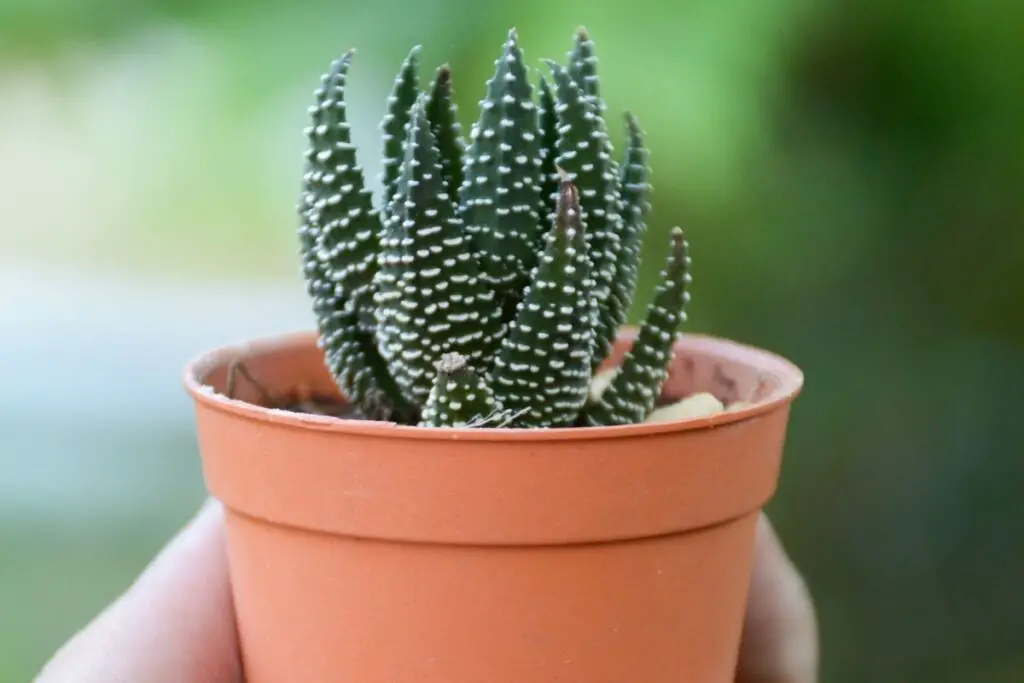
How much cold will Haworthia tolerate?
Haworthias grow best when the temperature is warm on an average level.
Temperature between 65-75°F is best for their growth.
Haworthias are claimed winter growers because they don’t stop their growth during the winter months.
But there is a difference.
Haworthias grow when the winters are cool.
An average temperature of 30-40°F is tolerable for them.
Most Haworthia varieties can endure up to 30°F.
You can even keep them outside at night if the temperature stays such at night too.
But when the temperature reduces lower than this range during the night, you have to take them indoors if you don’t give them frost damage.
You must know what temperature your region receives if you grow Haworthia outdoors.
If your region receives temperatures below 30°F, you must grow them in containers so that you can take them indoors.
For indoor plants, there are fewer chances of frost damage.
Just keep them in a warm place where the temperature is at room temperature.
Are Haworthias frost-tolerant plants?
Haworthias can tolerate slight frost when the temperature reaches 30°F (-1.1°C).
If the temperature decreases below night, you must take them inside.
But if it stays the same at night, keep them outside with little protection like shading them around or using frost cloth.
If your region receives low temperatures and frosts, it is better to grow them in pots so you can bring them inside before frost arrives.
Haworthias are not frost-hardy but tender succulents.
That is why most people consider Haworthias as an indoor succulent more than an outdoor one.
If you don’t bring them inside, they will get a cold injury, which won’t look pretty over the colorful Haworthias.
They will stay fine for 2-3 days, but they will start experiencing problems after that.
Indoors, ensure they don’t stay too close to an open window.
The freezing winds of the outside from the windows can touch their foliage and hurt them.
You must keep them in a warm room to receive their ideal temperature.
When should I bring my outdoor Haworthias inside?
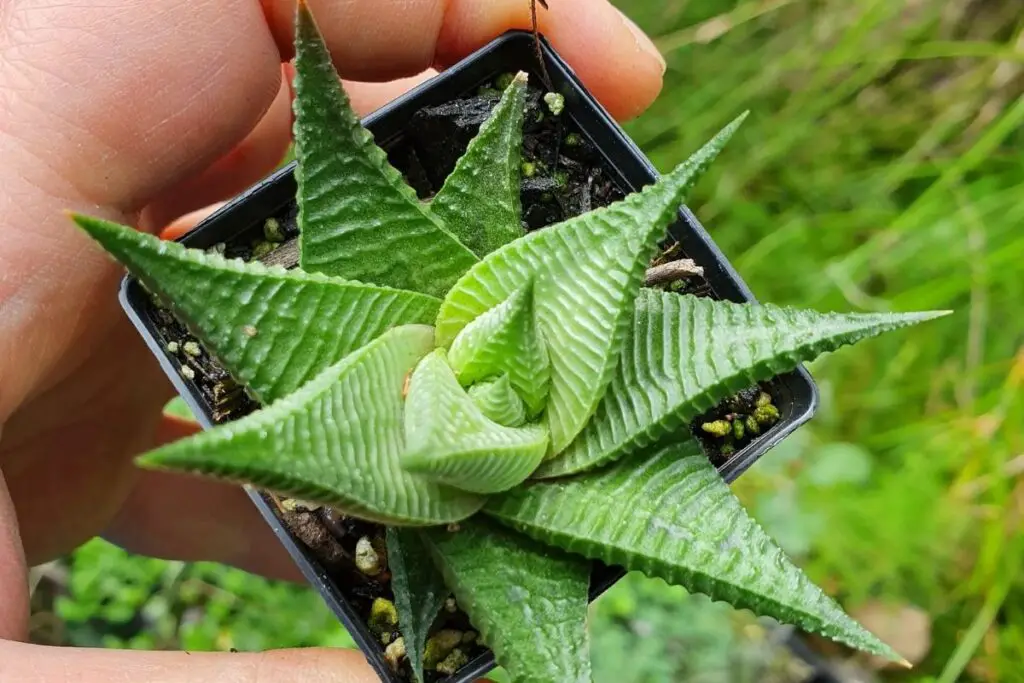
It depends on the area you live in.
You need to know the exact time of the upcoming winter when the temperature increases and when your region will get its first frost.
As a general rule, you must bring Haworthia indoors before your region gets the first frost.
If you live in areas like the US, the most probable time is September.
There are very low, most probably, zero chances of frost in India.
You must know the average low temperature for your living area.
If you live in an area near zones 9-11, you don’t need to bring Haworthia indoors during the winter.
Such zones will get very mild and cool winters endurable for Haworthias.
They will continue growing, but slowly, outside at such zones.
But if it is zones 4-6, you must bring them indoors in the winters.
These zones are expected to experience frost in the winters.
Sometimes, they might even get early frost in the fall.
In such situations, the plant will be affected very badly.
Even the hardy succulents get affected by the early frost.
When the temperature starts dropping below 30°F, bring Haworthias indoors.
However, you cannot just suddenly take them inside.
First, you must prepare them to handle the shifting smoothly by the plant.
That is what we will discuss in the next point.
Also read: Is Haworthia An Indoor Plant? (Indoor Care+Can We Keep It Outside)
Things to consider while moving Haworthia indoors
When the plant grows outside year long, they adjust themselves quite well to the outdoor environment.
They benefit more from the outside environment than indoors.
You need to make sure this receiving of benefits is not interrupted.
When you decide to bring outdoor Haworthias indoors, the shifting must be efficient.
Ensure that neither the plant nor you need to go through any extra trouble or effort.
Below are some tips to ensure that the shifting occurs as smoothly as possible.
Looking for gardening supplies? We have tested 100's of products before recommending them to you guys. Check out our best pick below:
| Image | Gardening Supplies | Best Price? |
|---|---|---|
 Top
Top Top
Top | Raised Garden Bed Kit | Check On Amazon |
 | XLUX Soil Moisture Meter, Plant Water Monitor, Soil Hygrometer Sensor for Gardening, Farming, Indoor and Outdoor Plants, No Batteries Required | No Results |
 Top
Top Top
Top | 82 Pcs Garden Tools Set and Extra Succulent Tools Set | Check On Amazon |
 | Joeys Garden Expandable Garden Hose with 8 Function Hose Nozzle, Lightweight Anti-Kink Flexible Garden Hoses, Extra Strength Fabric with Double Latex Core, (50 FT, Black) | No Results |
 Top
Top Top
Top | Dual Chamber Compost Tumbler | Check On Amazon |
 Top
Top Top
Top | Sunnyglade Plant Stakes | Check On Amazon |
 Top
Top Top
Top | Organic Cold Pressed Neem Seed Oil | Check On Amazon |
 Top
Top Top
Top | Mighty Mint Gallon :-Insect and Pest Control Peppermint Oil | Check On Amazon |
 Top
Top Top
Top | Scotts DiseaseEx Lawn Fungicide | Check On Amazon |
 Top
Top Top
Top | Jacks Classic 20-20-20 All Purpose Fertilizer | Check On Amazon |
 Top
Top Top
Top | 30,000 Seeds Pollinator Attracting Wildflower Mixture | Check On Amazon |
 Top
Top Top
Top | Survival Vegetable Seeds Garden Kit-Over 16,000 Seeds | Check On Amazon |
Prepare the planter for indoors.
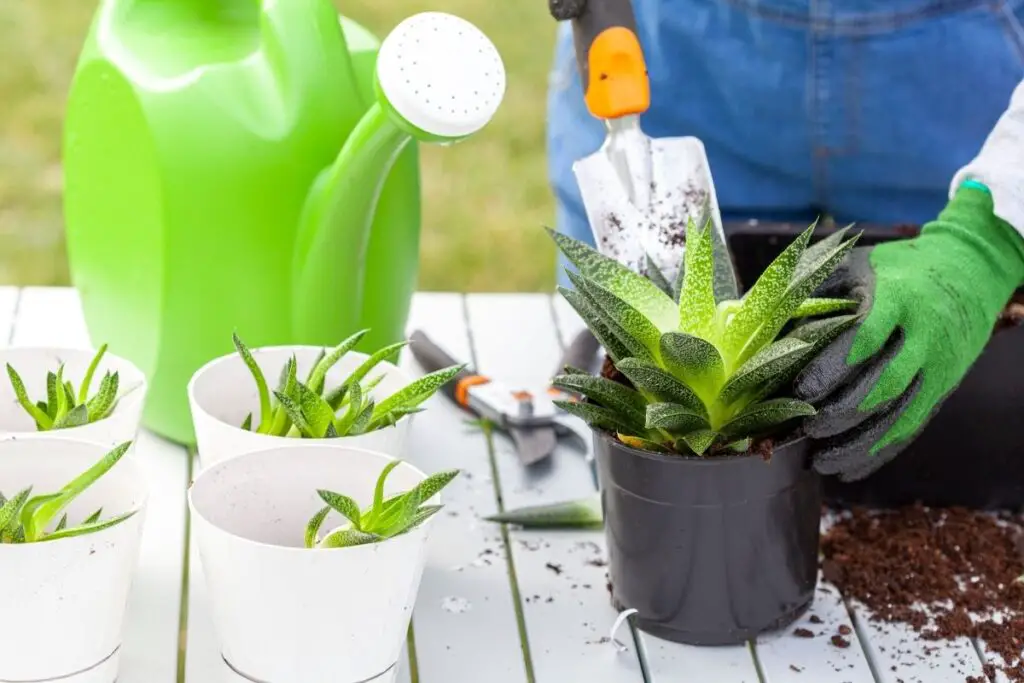
When you plan to bring the plant inside your home, you must ready your plant container.
Clean the planter by removing the excess dirt, fallen leaves, cobwebs, etc., that got attached to the pot by their constant stay outside.
Get rid of the dead leaves from the container and between the plant leaves.
Their stay can give rise to infections and rotting.
You can do another thing to make the planter look tidy.
Remove 1 inch of the topsoil and remove it with new soil.
It looks clean and gives Haworthia new soil to boost their growth.
Water them outside
Water the Haworthias 2-3 days before you plan to take them indoors.
This will be the last time to water them outdoors.
It will keep the soil moist for some weeks and begin to dry.
After you shift them indoors, the location you select will be clean and dry.
Next, watering will be done after 2-3 weeks when the soil has dried out completely.
Also read: How Often To Water Haworthia? (Haworthia Water Requirements)
Use well-drained soil
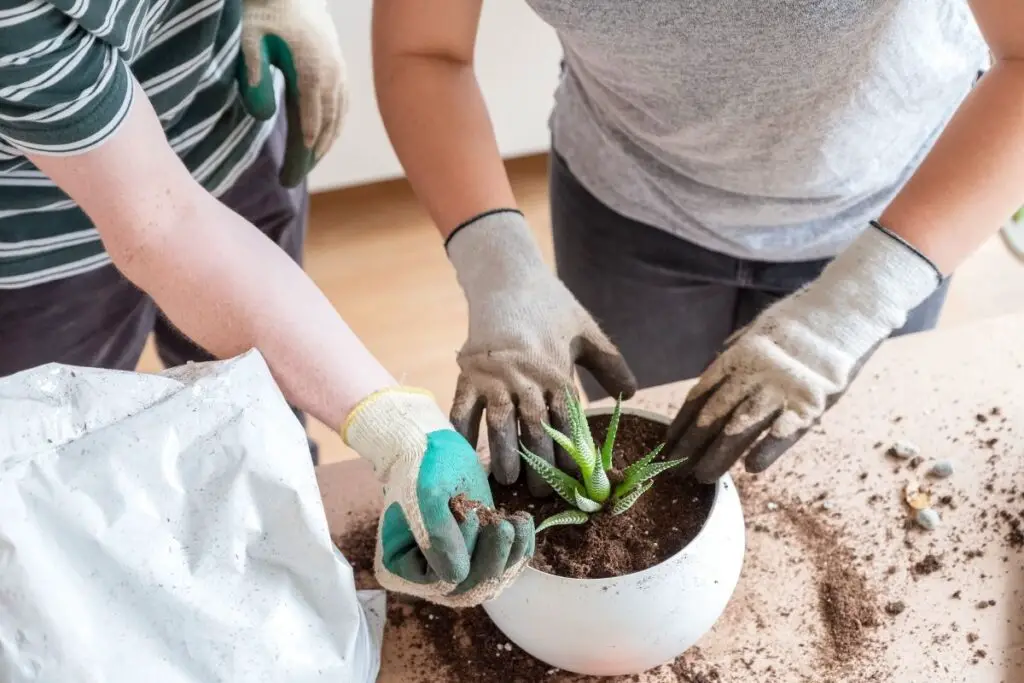
Always plant the Haworthias in well-drained soil.
Be it indoors or outdoors, well-drained soil prevents overwatering and rotting.
Haworthias will grow much better when they receive good drainage.
Along with the soil, the container also must have a drainage hole to flow out of excess water.
When you take the plant inside, a little more time is needed for the soil to dry due to low ventilation and light.
Good drainage can make it easier indoors.
It will ensure the plant’s growth smoothly without any intervention.
You can opt for a commercial cactus potting mix if you can’t make a soil mix on your own.
However, making your soil mix is easy if you know the right ingredients. Some suggestions are:
Recipe 1:
Recipe 2:
Equal parts of:
- 60% Coarse sand
- 40% Potting soil.
Recipe 3:
- 50% gravel of appropriate size
- 50% of soil, coarse sand, and organic fertilizer
These are soilless mixes and ideal greatly for pots.
These will improve drainage much more than a growing medium made with soil.
Mix equal parts of coarse sand or gravel with houseplant or garden soil for a growing medium with soil.
Also read: What Soil To Use For Haworthia? (+Ideal Soil Mix)
Refresh the arrangement
Over time, some leaves of Haworthia will start to shed leaves.
This is not a serious concern.
As they shed old leaves, they will grow back new leaves too.
Before you take them indoors, remove as many old leaves as you can from the plant.
This is important before you bring them in winter.
The more dead leaves you remove, the less are the chances of debris and fungus formation.
Remove them either with your fingers or tweezers.
If there is any hole due to Haworthia’s sudden death, fill it up by top dressing.
Check for pest infestation.
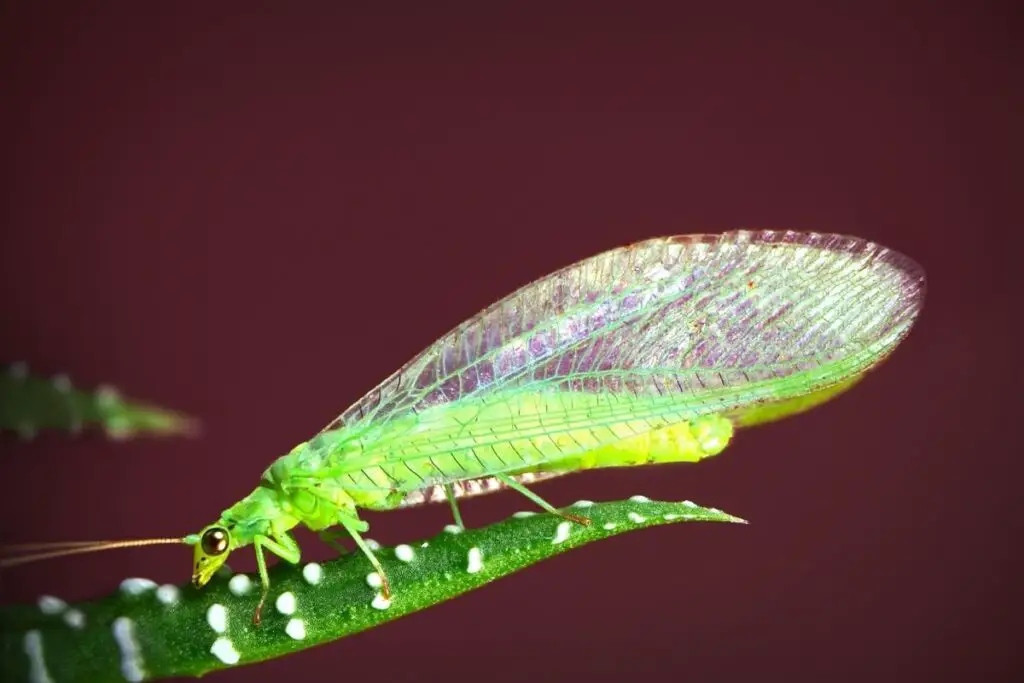
Outdoors, there are higher chances of getting infected.
So, you won’t want any unwanted guests inside when you take them indoors.
Check and observe your Haworthias very closely for signs of any pests.
If the plant shows signs like white or yellow, there could be chances.
The most common bugs are mealybugs.
Remove these culprits before bringing them indoors.
Otherwise, they might infect your other houseplants as well.
Then, you have to put a lot of effort while removing them.
What are the signs of frost damage in Haworthias?
If you are unaware of Haworthia’s weakness towards frost and keep them outside during such harsh weather, soon you will find signs of damage.
It won’t be a favorable sight to witness.
They might tolerate it for 3 to 4 days. After a few days, they will show signs like:
- Redness due to the extreme temperature
- Dark and mushy tissues due to the bursting of plant cells
When the sudden frost temperature strikes the plant, the plant cells burst from inside and give the plant a rot look.
The Haworthias can receive frost damage even indoors if you live in a region receiving early frosts.
You were away and couldn’t protect them.
When the water doesn’t dry out, it will freeze and burst the plant cells.
As Haworthias can store water in their leaves, they will undergo frost damage more.

How to fix it?
Don’t panic if your plant accidentally got frostbite. With every problem comes a solution.
When you find signs of frostbite, shift your plant inside to a place where it no more gets cold weather.
Let them stay there and dry out for some weeks.
Don’t bother them with watering; otherwise, it will result in rotting.
Also, don’t expose them to direct sunlight.
You can even cut off some frostbitten areas.
They will dry out completely and look crispy.
Removing those leaves can save the plant’s energy from wasting behind, reviving those leaves and using them to grow more new leaves.
If the frostbite starts spreading down towards the stems, saving the planet would be impossible.
So, you must take them inside before the expected frost.
You can still remove the damaged parts and revive them.
After removing the damaged parts, wait for some more days for watering.
Let the cut parts form callous (healing).
Water them once your plant looks fine, and the soil is completely dry.
Try the soak and dry method.
The plant will grow new leaves and look healthy if everything goes well.
Remember, patience is the key to success.
Be patient and give the plant time to recover from the frostbite damage.
How to care for Haworthia in winters?
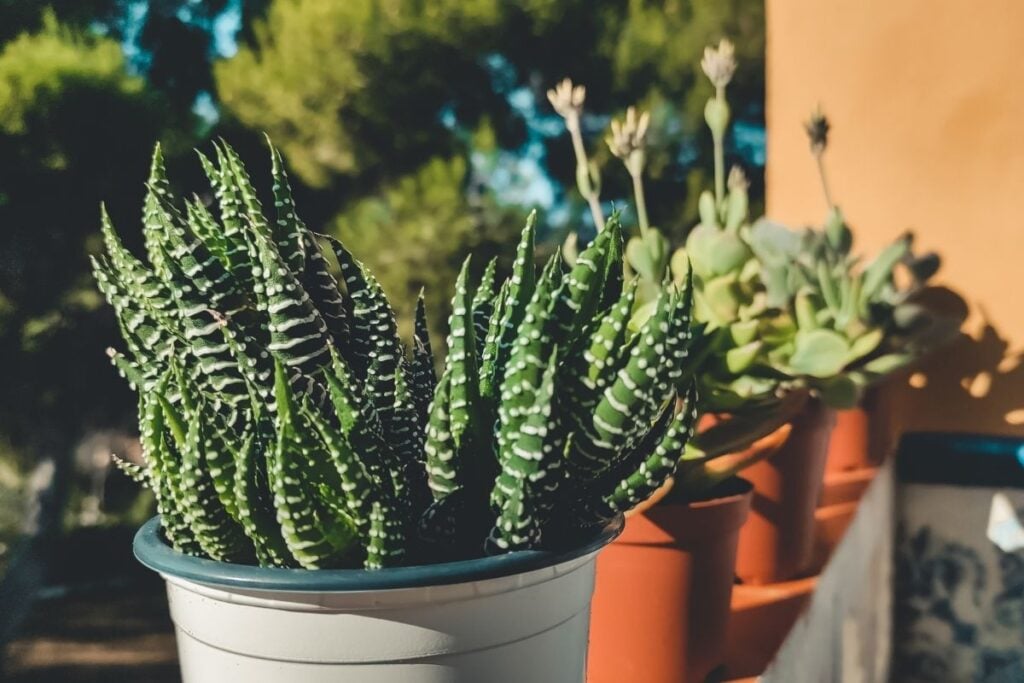
Here, I will share the indoor and outdoor winter care with you.
Remember that if your area gets very low temperatures, you have to take them inside and care for them.
It will be the same as those Haworthias growing indoors from the beginning.
The outdoors care will be for those who stay outside even during the winters.
So, let’s dive into it.
Brief winter care for indoor Haworthias
When the plant stays outside, they are habituated to get a different requirement.
You must bring them indoors before the temperature starts freezing.
| Factor | Care Tips |
|---|---|
| Light | The light level lowers during the winters. It decreases more indoors. So, it is important to give Haworthias adequate light. Let them have bright indirect light for 3 to 4 hours. Keep them near a west or south-facing window. These directions receive direct sunlight, but since it is winter and the light levels are low, Haworthias won’t mind the direct sun. In the case of extremely low lights, use artificial lights. Florescent lights releasing classical cool white lights are suitable for Haworthias. |
| Water | You must water them after the soil gets dry. It will help you to understand Haworthia’s watering needs best. Indoors, the light and air levels are quite low compared to outdoors. Thus, it will require more time for the soil to dry fully. You need to be careful while watering. Watering Haworthias too much can result in overwatering and rotting and, ultimately, the death of your precious Haworthia. |
| Airflow | Since the airflow is quite low indoors, you need to ensure Haworthias get enough airflow. It will quicken the drying of the soil; decrease the chances of rotting and infestation. Keep them near the windows when some cool breeze blows. You can switch on the ceiling fans lightly. It shouldn’t be too high, but the air should feel like a light breeze. However, it can change depending on their soil quality and watering frequency. |
| Soil and container | Bringing Haworthias inside gives you the chance to improve drainage more. Use a lightweight soil mix with gritty materials. Remove 1-2 inches of the topsoil and replace it with new soil. Add some perlite or gravel. Use a container with drainage holes. Good drainage will encourage quick drying of the soil. |
| Fertilizing | Don’t fertilize Haworthias in the winters indoors or outdoors. Their growth will slow down and won’t absorb the nutrients. It can cause over-fertilization. |
Brief winter care for outdoor Haworthias
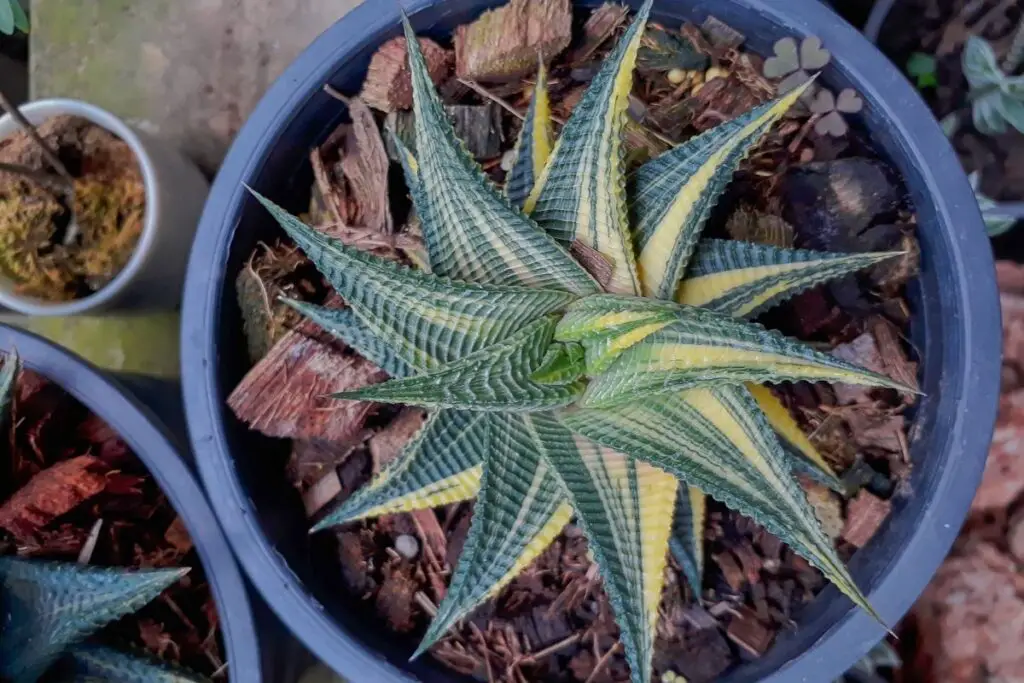
If your area receives cool, mild winters, let the Haworthias remain outside.
| Factor | Care Tips |
|---|---|
| Light | The light is the same all the time. Bright indirect light is what they prefer the most. You can remove shading nets because the sunlight intensity is less in the winters. Some hours of direct sunlight, especially the morning light, encourage good growth and prevent infestation. |
| Water | It is the same as indoors. Water whenever the soil dries out fully. They will dry faster outdoors because of adequate sunlight and airflow. You can water them once a month. Still, you must check the moisture. |
| Fertilizing | It is the same as indoors. Don’t fertilize Haworthias during the winters. It can cause over-fertilization because the succulents will not take the nutrients due to their slow growth. |
| Mulching | Mulching the soil bed can help the plants to stay insulated. But you must do it with small stones and pebbles instead of dried barks or leaves. |
| Protect them from water | If your Haworthias are in the ground or containers, ensure that the plant is not under roofs, tall trees, or near fountains. The water dripping from the roofs or tall trees can fall on the soil bed and keep the bed saturated all the time. |
| Remove the dried leaves from the soil surface. | Some leaves will dry and fall off the plant; it is natural. You must remove these leaves timely. The debris can get damp due to wet winters and rotting and infestation. |
Final thoughts
Haworthias are very soft and tender succulents. They won’t be able to tolerate very low temperatures. You must shift them indoors when the temperature begins to drop too low.
If your area receives cool winters and stays within 30-40°F, you can grow them in the ground and keep them outdoors only.
For wintering Haworthias indoors and outdoors, you must keep them at their preferred spot, let them have adequate light, provide water at a low frequency when the soil gets completely dry, and don’t fertilize them.
Make sure they get good airflow while indoors.
Reference: The Haworthia Society, Botanical Studies, University of Wisconsin-Madison, Sciencedirect, Researchgate, Haworthia Study.
